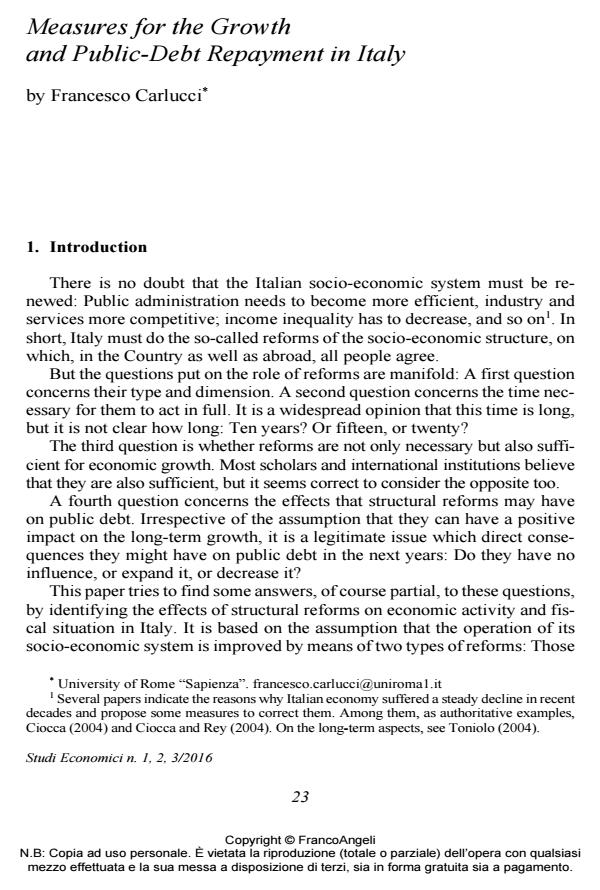Measures for the Growth and Public-Debt Repayment in Italy
Journal title STUDI ECONOMICI
Author/s Francesco Carlucci
Publishing Year 2017 Issue 2016/118-119-120
Language English Pages 36 P. 23-58 File size 398 KB
DOI 10.3280/STE2016-118003
DOI is like a bar code for intellectual property: to have more infomation
click here
Below, you can see the article first page
If you want to buy this article in PDF format, you can do it, following the instructions to buy download credits

FrancoAngeli is member of Publishers International Linking Association, Inc (PILA), a not-for-profit association which run the CrossRef service enabling links to and from online scholarly content.
Keywords: Structural reforms, economic growth, Italy, public debt, econometric model, simulation.
Jel codes: C54, E17, E52, H68
Francesco Carlucci, Measures for the Growth and Public-Debt Repayment in Italy in "STUDI ECONOMICI " 118-119-120/2016, pp 23-58, DOI: 10.3280/STE2016-118003